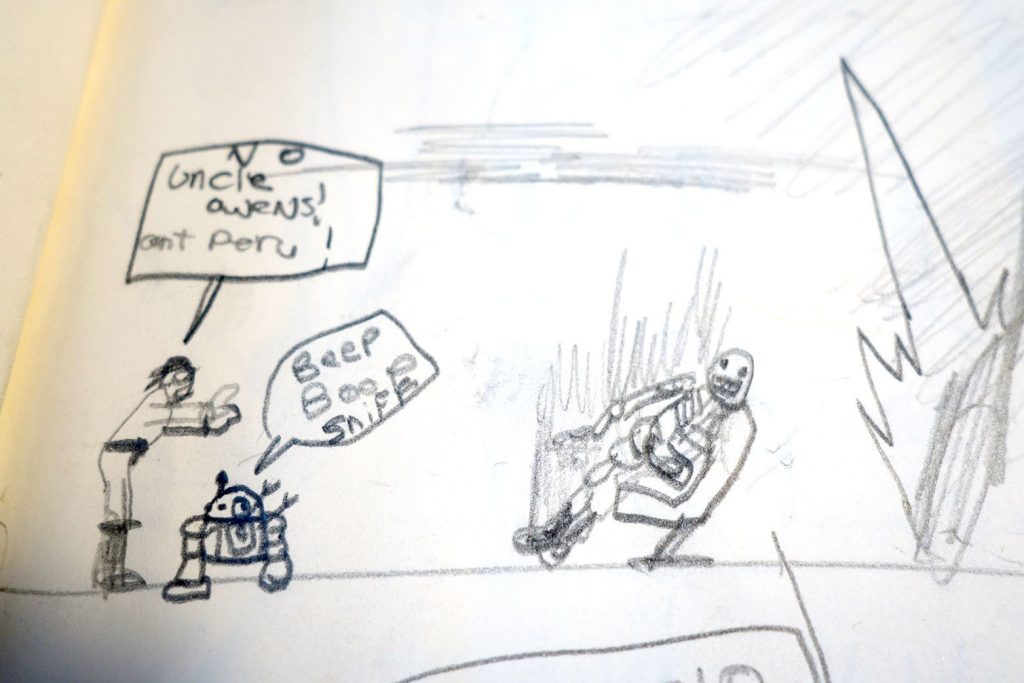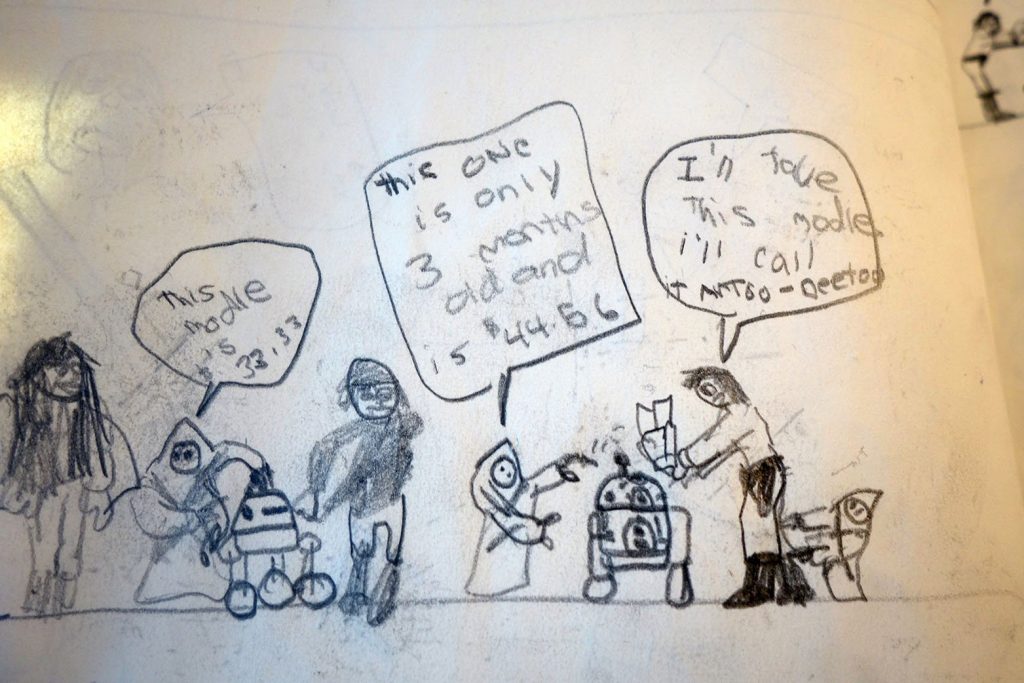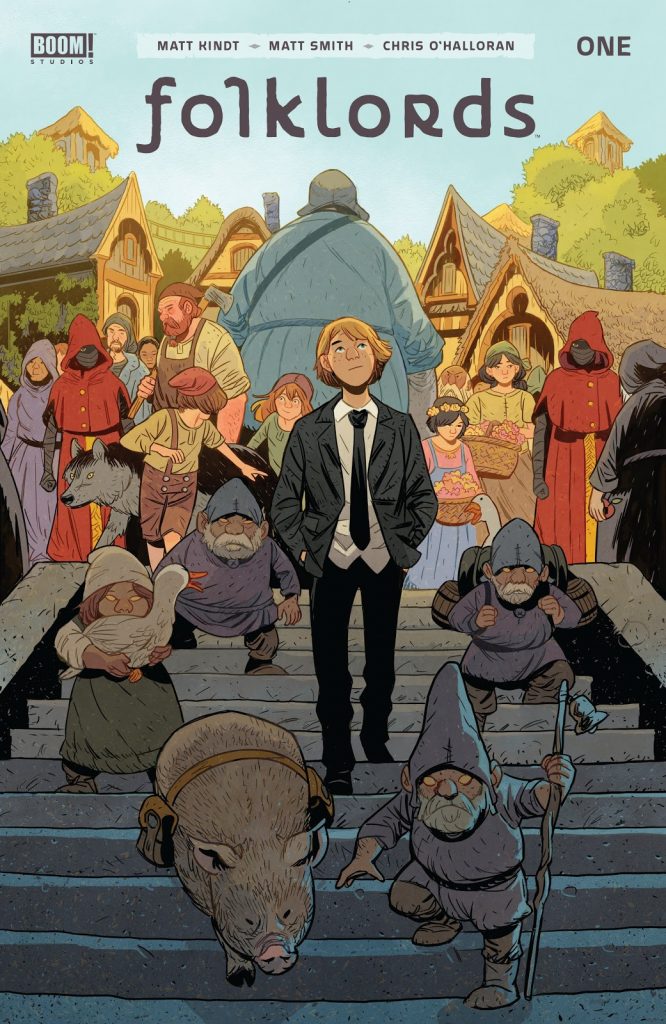“I Kind Of Fell Backwards Into Comics”: Matt Smith on the Art of Folklords
I feel like there’s a list of things I’m known to be a fanboy of in comics. Nextwave, for sure. Kaijumax, of course. My guy Stilt-Man, you better believe it. Near the top of that list in terms of creators, though, is artist Matt Smith, whose art in the Image series Lake of Fire with writer/colorist Nathan Fairbairn created an instant, immense fan of me.
Naturally, whenever anything new came up with Smith involved, I took a long, hard look at it, especially when he partnered with writer Matt Kindt on the recent BOOM! Studios series Folklords. I was rather fond of that series, and unsurprisingly, a huge part of that was because of Smith’s exceptional line art. It was exceptional throughout, showcasing so much of what I love about his work: the storytelling, the character work, the humanity, the life, and the exceedingly great monster design. To celebrate that, I did what fanboys do: I reached out to Smith to set up a chat about his art, Folklords, and more, mostly through the prism of five pieces of art from the series.
Here’s what resulted from that, with it even including a special treat of some very, very early Matt Smith Star Wars art. It’s a delight. Oh, and if you haven’t read Folklords, I highly recommend it. Its trade paperback arrives in comic shops everywhere on July 8th.
Let’s start in the beginning for you. What came first for you, comics or art? And was your interest in both always connected?
Matt Smith: Art followed fairly quickly by comics I think. The earliest artwork I still have from my childhood is an attempt at a Star Wars comic, but I’m sure it was preceded by a lot of Star Wars drawings in general. Maybe my answer should be Star Wars.
-

Early Matt Smith Star Wars Art -

Early Matt Smith Star Wars Art
As you were figuring out your artistic voice and what you wanted to do, did you go to art school or have any formal training? Or were you totally self-taught?
MS: We had an amazing art teacher in high school, Susan Paradis, who either directly inspired us to pursue art or pushed those along who were already clearly headed that way. For me personally, I never really had considered going on to art school until she said “you could do this”. Those were pretty powerful words to hear as a kid meandering through those years without much of a plan. I did get some great figure drawing instruction out of college later but I think I got most of what I needed in high school and after that it was just many, many years of terrible drawings to continue developing.
From my conversation with Matt Kindt, it sounded like Folklords largely originated from his desire to work with you. To reverse that, what made you interested in working with Matt, and what appealed to you about the idea of Folklords?
MS: It was Ether. I was immediately drawn into his writing there. Then it was Grass Kings. I don’t often pick up books for the writer as I’m drawn to the art first by and large when picking up stuff at the shops, but Matt became one of the few that I would. So when an editor at Boom asked if I was interested in either of a pair of Planet of the Apes stories, I chose the one written by Matt, even though it was 8 pages vs. a full issue in the other option. That experience led directly to Folklords as I really liked the Apes experience and luckily Matt seems to have as well.
Let’s talk process. For Folklords, what was your art process, and have you found that you’ve refined your process as you’ve moved further into your career and you’ve figured things out a bit?
MS: I kind of fell backwards into comics. I was doing mostly children’s lit work before deciding I wanted to write and draw a comic book tribute to the Icelandic Family Sagas. In that case, the story was already started as a self published series before being contacted by a publisher, who then gave me as much time as I wanted to finish the whole story. I hadn’t planned on working in comics outside of that until Nathan Fairbairn approached me with Lake of Fire.
All of this is to say is that I’ve been trying to develop a process since then. Comics are complex projects and comics have regular deadlines. I haven’t missed one yet but it takes all I have to stay on target. I’d like to say I’ve picked up a little speed and maybe some improvements in both conveying action and emotions. I still feel it’s a big challenge every time and not at all a given that it’s going to work out. I wouldn’t work on a comic unless I love the script—that provides the motivation, the excitement that this will be a great story when all the elements come together. It’s just not worth the effort and hours if it’s only to have the work.
Now that I think of it, after I read Nathan’s pitch for Lake of Fire, I think I told him it was excellent but that I didn’t think I was the guy who could pull it off. He also said “you can totally do this.” Ha. I’m either easily motivated by those magic words or I’ve just been lucky to have had these people intersect with my life at specific times. Or both.

I don’t know what it was about this cover, but as soon as I saw it, I was all about learning more about this character and this world. It’s a relatively simple cover, but it also says a lot about the story and the character. Given that this was the introduction most everyone would have to Folklords, what were you hoping to accomplish with this?
MS: First off, that’s really cool to hear, thank you. The main thing we wanted to convey with the introductory image is that Ansel is an outsider in his world—and why is that? What’s the deal with this kid in a suit surrounded by gnomes? We were hoping that would draw potential readers in. It also sets the overall tone of the series somewhat as it’s not really a dark fantasy story, though it has its moments of darkness. Ansel is a thoughtful, hopeful character maybe with his head in the clouds a bit too often. I was hoping to get across something about his character right off the bat as well.
I love covers. They make a huge difference to me, as I’ve discovered some of my favorite comics simply because I was drawn in with the cover. I have my own ideas, but I’m curious: to you, what makes a great comic cover? Are there things you aim for with your cover work?
MS: Oh, I’m totally with you there. And I have to say that I’m still stunned by the covers that the incredible artists gave us for the Folklords variants. I pulled a bunch of them out the other day and looked at them again, amazed that they exist. I just try to get a bit of story into the image, having a character interacting or contrasting with other characters like the first cover or story elements like the last cover. The main thing is that it’s in service of the book by announcing that there’s an interesting story inside. Who’s that guy? What’s she up to? That looks strange—what’s going on there? That all seems obvious, but it’s really the only goal I have. I know the least successful covers I’ve done are when I’ve just focused on the drawing in a technical sense—trying to look like a good artist rather than thinking of the story first.
subscribers only.
Learn more about what you get with a subscription
